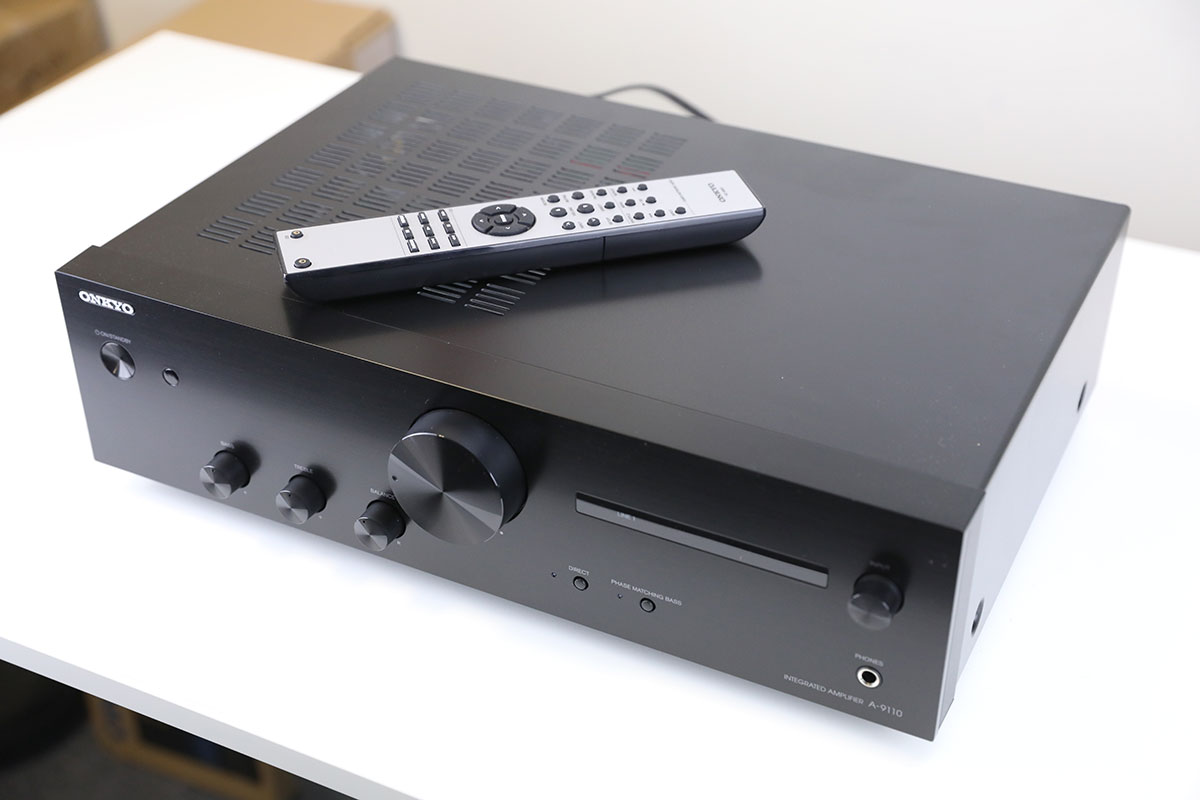
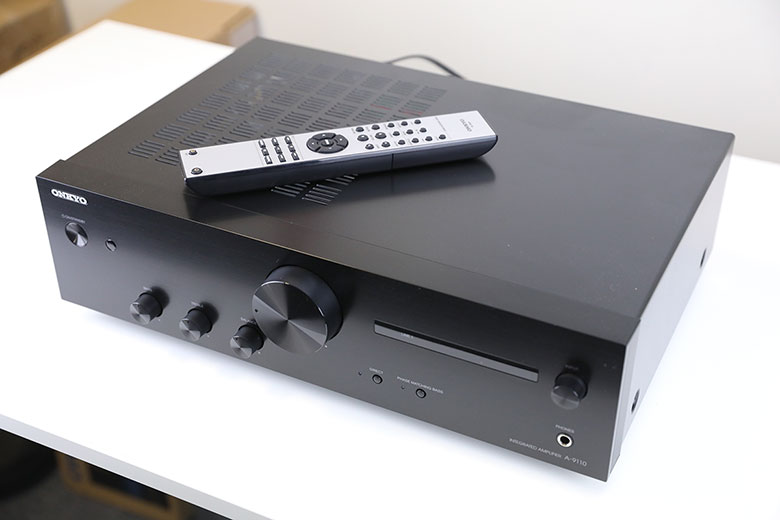
The Master Switch


The Master Switch
Weight: 15.4lbs
RMS: 50W/4Ω
DAC: No
What We Like: Weighty sound, huge value.
What We Don't: Confusing display, no DAC.
See the Onkyo A-9110
Audio companies are getting smarter. Virtually every piece of gear that crosses the threshold of our office is capable of connecting to Bluetooth and Wi-Fi, handling hi-res audio,or adjusting the sound to fit our unique hearing profiles. Because of this, we find it very brave of Onkyo to release the A-9110: a stereo amp that's distinctly old-school. In this review, we break down the A-9110's sound, design, packaging and accessories, specs and more. To see how it stacks up, check out our list of the best stereo amps.
It's easy to look at the Onkyo A-9110 and not be impressed. It's doesn't, shall we say, get the pulse racing when you open the package. It's an amplifier: a big, black box that can power speakers. It has connections on the back and controls on the front and about as much style as a Toyota Prius. But when you hook up the wires and queue some music, that first impression gets blown to kingdom come.
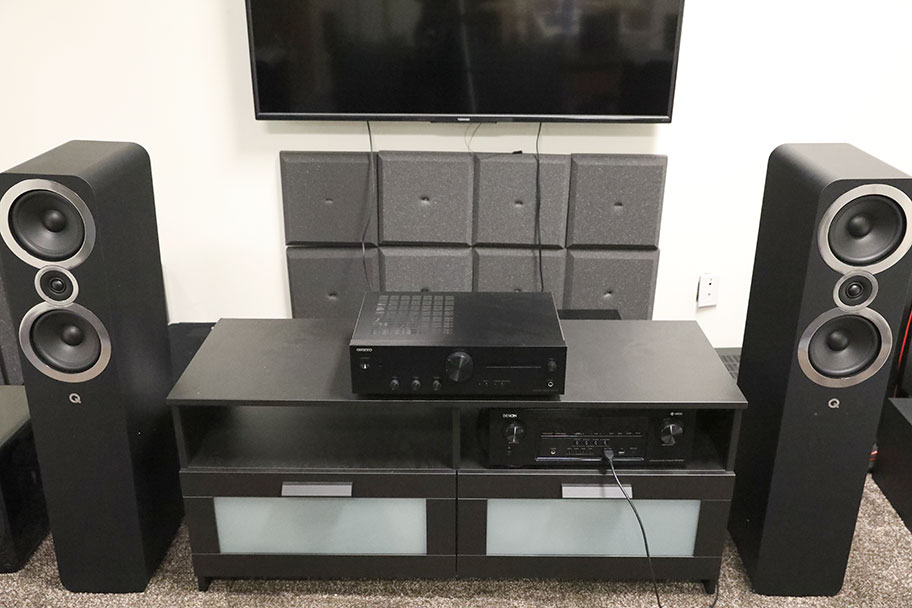
The A-9110 is a Class A/B amplifier (read more about amp classes here). It doesn't technically have huge power - 50 watts per channel RMS at four ohms, which means 25 watts per channel into a more common eight ohm speaker. Compared to an amp like the Dayton Audio DTA-2.1 BT2, which offers an identical wattage for a third of the price, the specs don't seem too impressive. But amp power isn't just about wattage; it's about the quality of the circuits, the current, and the voltage. And boy oh boy, does the A-9110 shake what it's mama gave it.
We truly couldn't believe how well the A-9110 could power speakers. From small bookshelf speakers to big floorstanding speakers, the amp didn't break a sweat. We were getting nothing but clean, raw power, which resulted in excellent volume - and more importantly, a real sense of weight in the sound. As for distortion, there was hardly any, no matter how hard we pushed it. Much of this was thanks to something called Optimum Gain Volume Circuitry, which reduces the electrical noise in the audio signal, regardless of how high or low the volume is. It works exceptionally well.
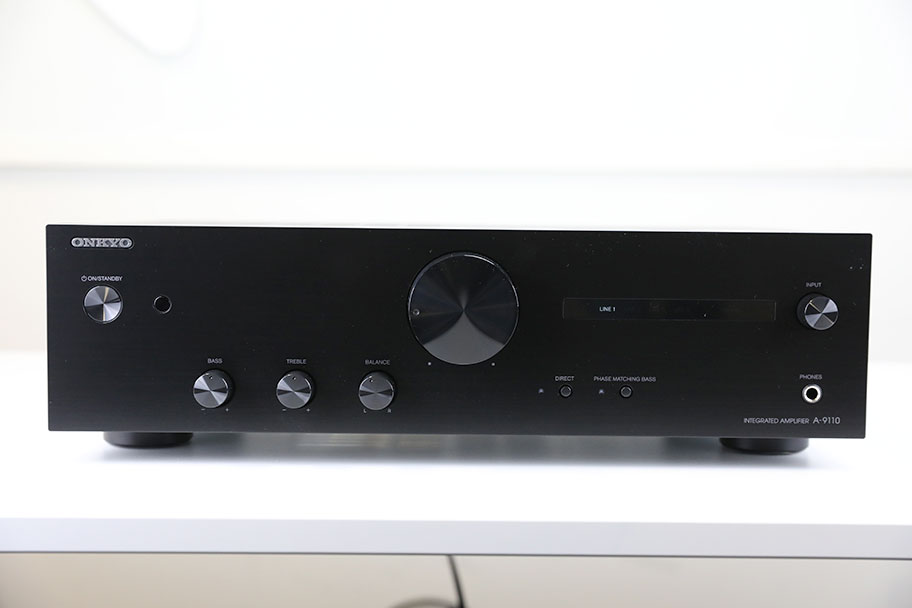
For just over $300, the results we had were simply staggering. The Onkyo A-9110 is not only the most old-school amp we've ever tested - more on this below - but it's also one of the most focussed, in terms of providing powerful sound. It's like one of the pilots in the old US space program - the original one in the early 1960s, back when America was still battling the Russians. Those pilots were all about keeping things operational - nothing extraneous, no science experiments in orbit, no wiffly-waffly radio observations about the awe they felt as they gazed at the Earth. Just a clear goal, a perfect launch, and a splashdown right on target, followed by a ticker-tape parade down Broadway and a schmoozing session with President Kennedy in the Rose Garden. We never thought a $349 amp would remind us of the space program, but this one did. It might be the best Class A/B amp we've ever tested.
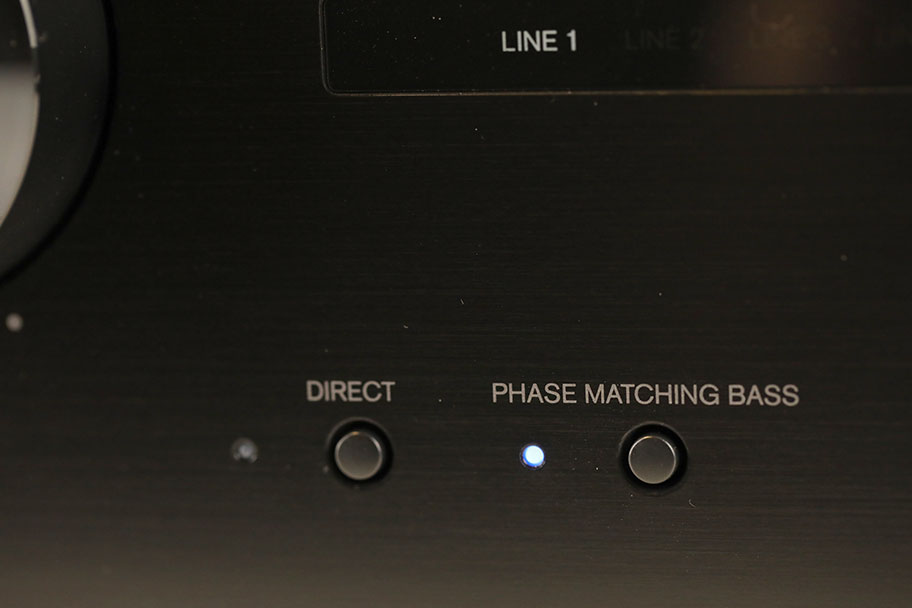
As you'd expect, the clean power of the A-9110 translates to exceptionally clean sound. The bass is no exception. It's a definite improvement on the low end compared to amps like the Sonos Amp (full review here). Since that amplifier costs $899, you'd expect it to crush the Onkyo A-9110's internal sound. But the bass of the A-9110 smokes the Sonos, coming across as clean and clear, with no distortion that we could detect. It had exceptional weight, giving kick drums and bass lines significant grunt.
Despite its raw power, there's something that kills us about the A-9110. It's not just a big, grunting amplifier that gives you huge bass and nothing more. The A-9110 delivers a surprising subtlety in the low end. There are two features worth drawing attention to here. The first is Phase Matching Bass Boost, which slightly alters the tone at lower volumes, where sound quality starts to suffer. It takes care of the issue beautifully, and we were able to pick out details in the sound even at low volumes.
The second feature is called Direct Mode, and it's one that allows you to have more neutrality in your sound. This bypasses both Phase Matching Bass Boost and the amp's tone controls - more on these below - and gives the signal the simplest possible path between source and speakers, resulting in a cleaner sound. One of the Onkyo A-9110's biggest competitors, the Denon PMA-600NE, has similar features. The problem is, they can’t compete with the less-expensive Onkyo. We dig the PMA-600NE for other reasons, chiefly its excellent DAC and Bluetooth functionality, but there’s no question that the A-9110 is a better overall pure amplifier.
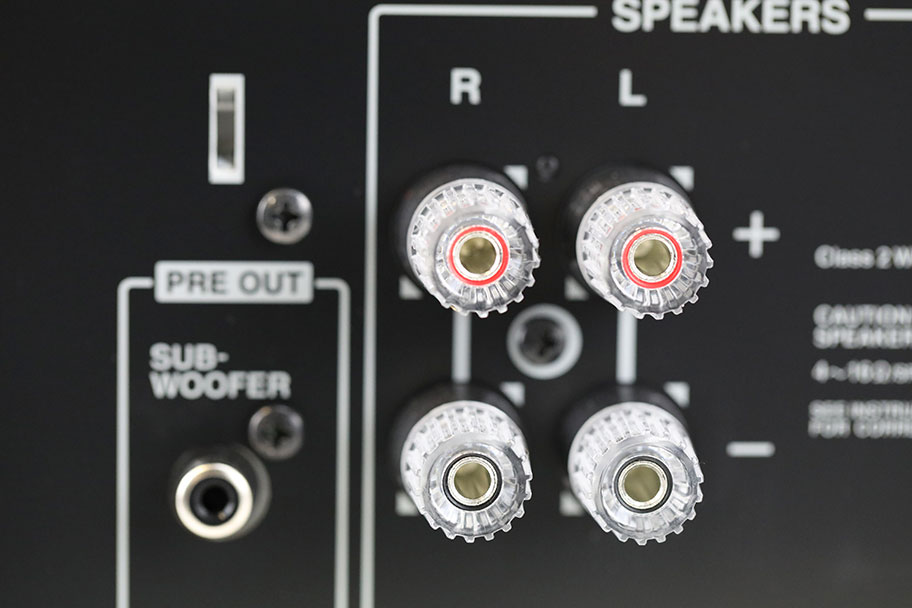
Although we were quite taken by the A-9110, we must admit that it's not going to beat high-end integrated amps. When pitted against something like the Peachtree Audio nova300, it will certainly fail. Because as good as the sound is, the A-9110 is still a sub-$400 amp, and it does have its flaws. The deficiencies are most notable in the mids and the highs, neither of which are as detailed or impactful as the low end. These elements of the sound are still perfectly passable, but they can seem a bit disjointed at times. It would have been great to see a similar set of features to Direct Mode and Phase Matching Bass Boost incorporated to solve issues in the high-end.
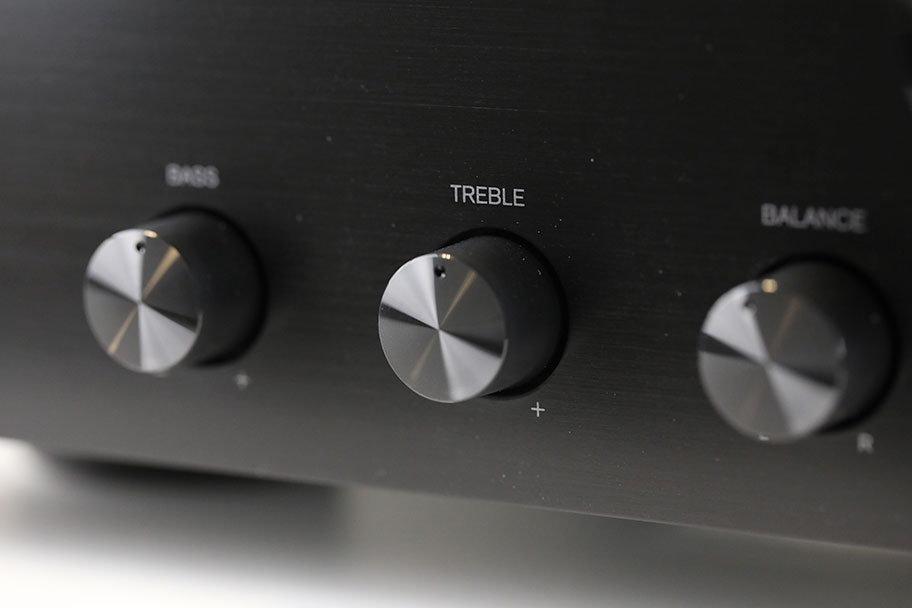
The A-9110 incorporates a set of tone controls on the front of the amp – three simple knobs which control bass, treble, and speaker balance. This feature, more than anything else, makes this amp seriously old school – it's the kind of classic design you'd see on 1960s hi-fi racks. And whether we find them charming or not, the problem is that they just don't work very well. While they do deliver subtle adjustments, they never feel like they're improving the sound. It's as if they've been put there because Onkyo felt they had to be there. Given how extraordinary the rest of the circuitry is, we don't think they're entirely necessary. Other amplifiers in this line have them, too - the Onkyo A-9150, which costs $479, has the exact same line of knobs on the front. We could have done without them after a few testing attempts. They weren't needed and we quickly forget they existed.
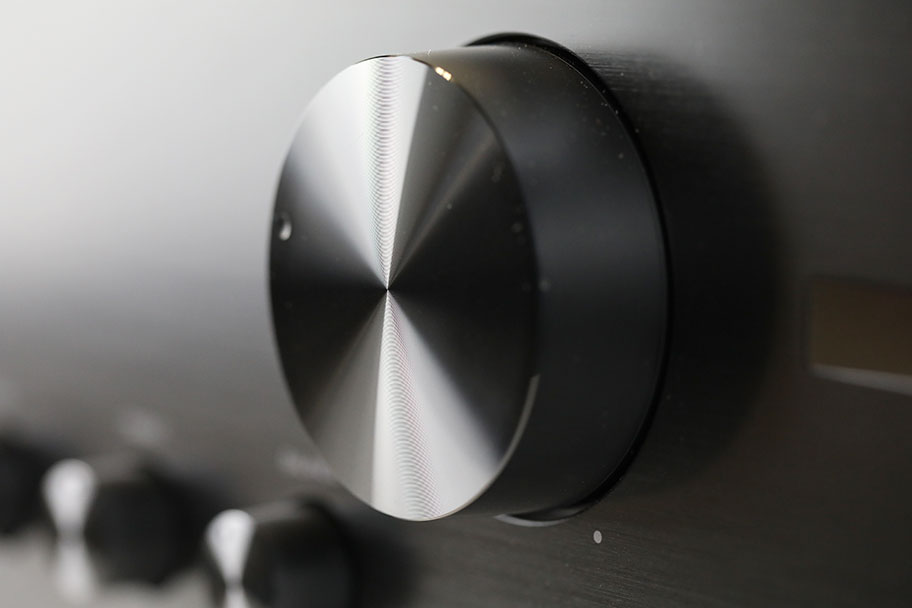
We weren't kidding when we said the A-9110 was a big black box - although, in fairness, you can buy it silver as well. There are things you will never see in the audio world - not now, not in any universe - and one of them is Onkyo offering a product in any color other than black or silver. Sadly, it's not going to happen.
The A-9110 weighs almost 20 pounds, which is generally a good thing, as heavier amps tend to have higher quality circuitry. There's no question that the build quality is excellent, especially for this price. We dig the brushed-metal front-end, and there are even one or two touches we didn't expect. Like a motorized volume knob, for example. We don't think we've ever seen one in an amplifier below about $800, and since Onkyo doesn't mention it anywhere in the press material or specs, it came as a genuinely pleasant surprise. The amplifier might have a boring aesthetic, but it's built like a tank.
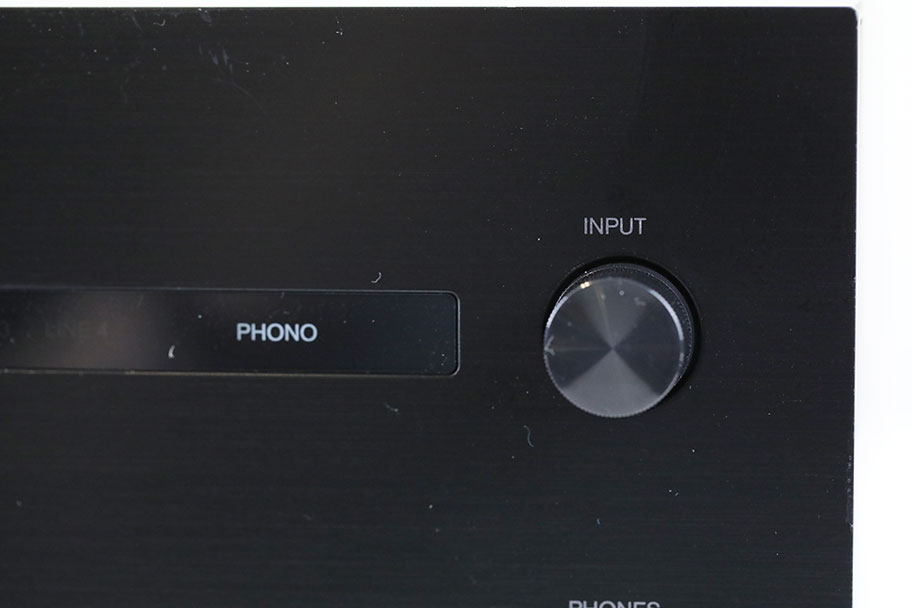
Unfortunately, the lack of imagination with the design extends into the controls. On the surface, they seem relatively straightforward. You get the aforementioned tone controls, the motorised volume knob, an input selection switch, and two buttons to turn on Direct Mode and Phase Matching Bass Boost. So far, so simple. The problem comes with the display, which is simply a thin rectangle listing the active input. Somewhere along the line, the engineers at Onkyo thought it was a good idea to have the input selection list double as an indicator that speaker impedance and subwoofer output settings have been changed, which is about the most awkward solution we could have imagine. It's not like we are asking Onkyo's R&D team to design an app here – the very thought would probably give them heart attacks – but there have to be better ways to communicate information than this. Virtually every other stereo amplifier we've tested does a better job.
It helps that the size, weight, and construction of the A-9110 really does help lower noise. There's very little hum or hiss here – something that would have been evident in the higher frequencies. As we mentioned, part of this has to do with the excellent circuitry design, and the way in which Onkyo have squeeze every drop of clarity they can from the internals. But the thick chassis definitely helps here, too.
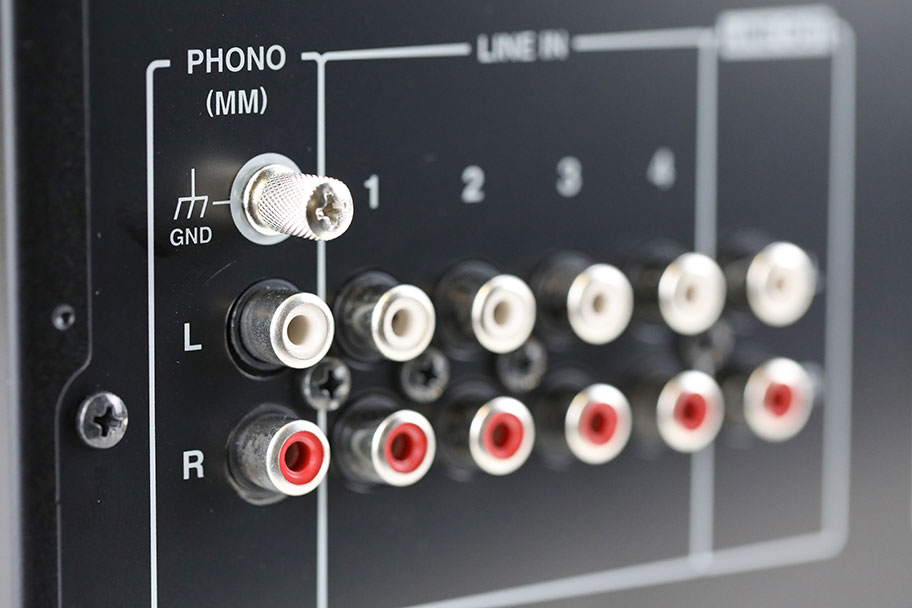
The old-school approach doesn't stop at the design and sound. Take a look around the back of the A-9110, and you'll find that things are exceptionally simple. Beyond the standard pair of speaker binding posts, you get a subwoofer out, and a line out if you're crazy and want to use the A-9110 as a preamp. There are four simple line inputs, and a phono input with ground connection that can take both MM and MC inputs – here's what those are.
Of course, even if you're only mildly awake, you've already spotted the problem. There are no digital inputs. No USB, no optical, nothing. While you'll be absolutely fine to connect this amplifier directly to a turntable, anybody who runs their music off a PC or tablet is going to need a separate DAC (Digital-to-Analog Converter). However, while we would have prefered a digital input, it's a little hard to penalised the A-9110 for this deliberate design choice. Onkyo obviously wanted this to be as focused a component as possible, with a very simple signal chain.
This might be a dream for old-school hi-fi fanatics, but it does take this amp out of the running for a single in-the-box solution. Onkyo does offer a version with an included DAC: the Onkyo A-9150, which costs $479 and comes with an AKM DAC that can handle files up to 32-bit / 768 kHz. But in our honest opinion, you don't need to buy it. There's a much simpler and more elegant solution which actually costs less money. Pick up the A-9110, and then head on over to Schiit and by one of their little Modi DACs for $125. It's a much better setup, with cleaner conversion, and it allows you to change out the DAC at a later date if you like.
You’ll hardly be surprised to hear that the A-9110 has no wireless - no Bluetooth, no Wi-Fi, zip, nothing, nada. We weren’t expecting this, as you can imagine. With an amplifier this old school, even the idea of a wireless connection would have made Onkyo’s engineers raise their eyebrows in horror. The problem is, it does make the amp significantly less convenient to use. If you’re looking for an amplifier with full wireless functionality, for only a little more money, then try out the Sonos Amp (full review here).
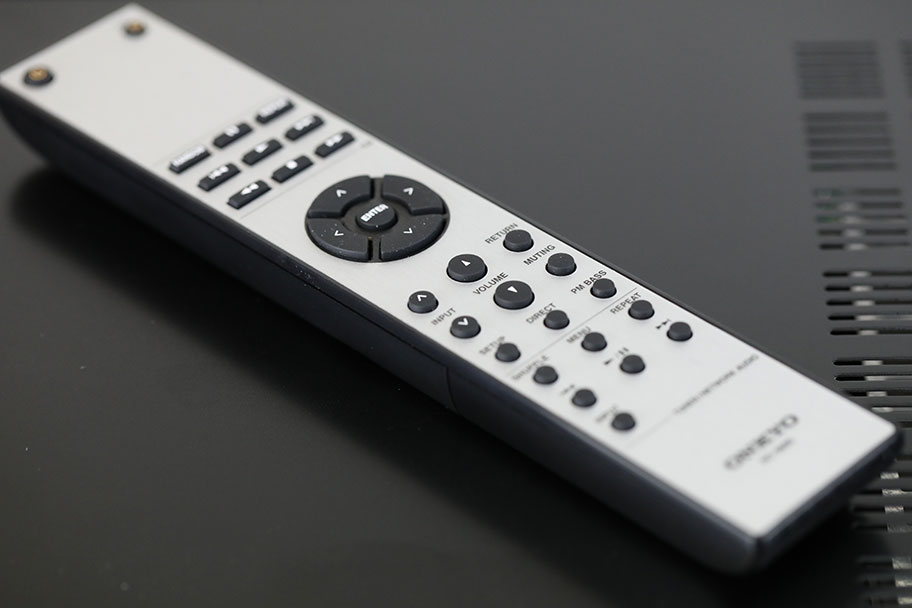
The only accessory you get with the A-9110 is a remote, and there's not much to be said about it. Like the amp controls, it keeps frivolity and flair to an absolute minimum. It's a slim slab with a healthy amount of space on its surface, and big rubbery buttons. It does present a fairly complicated set of controls, given the limited amount of information the amp gives back to you on the digital display, but we got our heads around it relatively quickly. We are still not entirely sure why there are two sets of track controls on the remote, but you do get an on switch for Onkyo's line-up of CD players. We didn't have one of these to test, so we can't comment on how well this works.
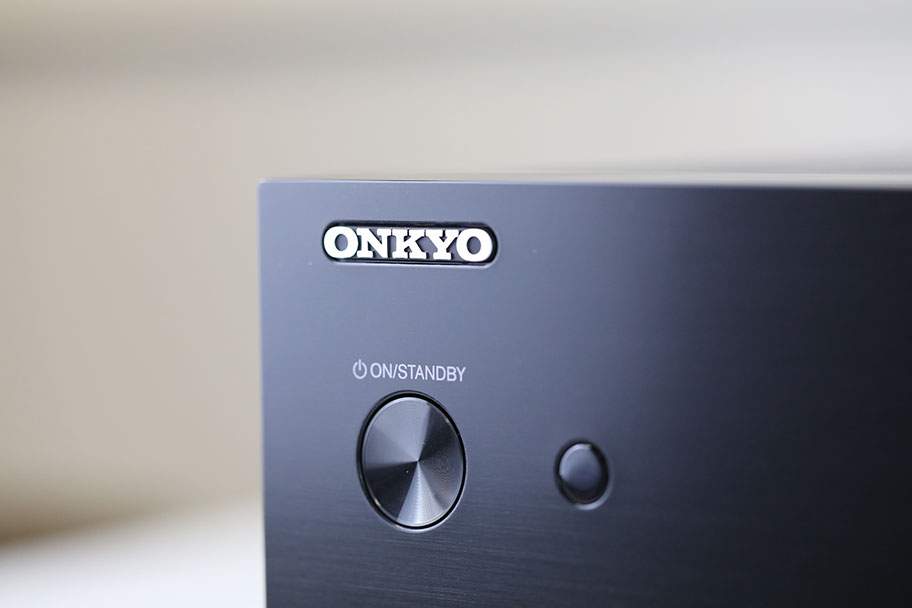
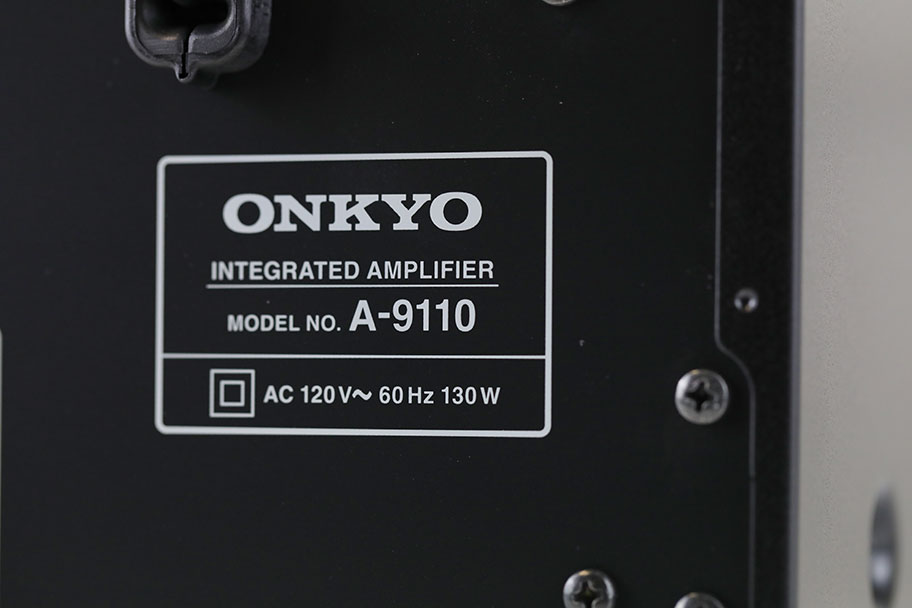
| Stereo Amp | Price | Weight | RMS* | DAC? | Peak** | Dimensions |
|---|---|---|---|---|---|---|
| Onkyo A-9110 | $349 | 15.4lbs | 50W/4Ω | No | Unknown | 17.1" x 13" x 5" |
| Sonos Amp | $899 | 4.6lbs | 125W/8Ω | Yes | Unknown | 8.2" x 7.3" x 2.5" |
| Denon PMA-600NE | $499 | 15lbs | 90W/8Ω | Yes | Unknown | 17.1" x 12.1" x 4.76" |
| Dayton Audio DTA-2.1 BT2 | $97 | 2.75lbs | 50W/4Ω | No | Unknown | 6" x 5.1" x 1.5" |
| Onkyo A-9150 | $479 | 23.35lbs | 60W/4Ω | Yes | Unknown | 17.1" x 13" x 5" |
*RMS = RMS/Continuous Power
**Peak = Peak/Dynamic Power
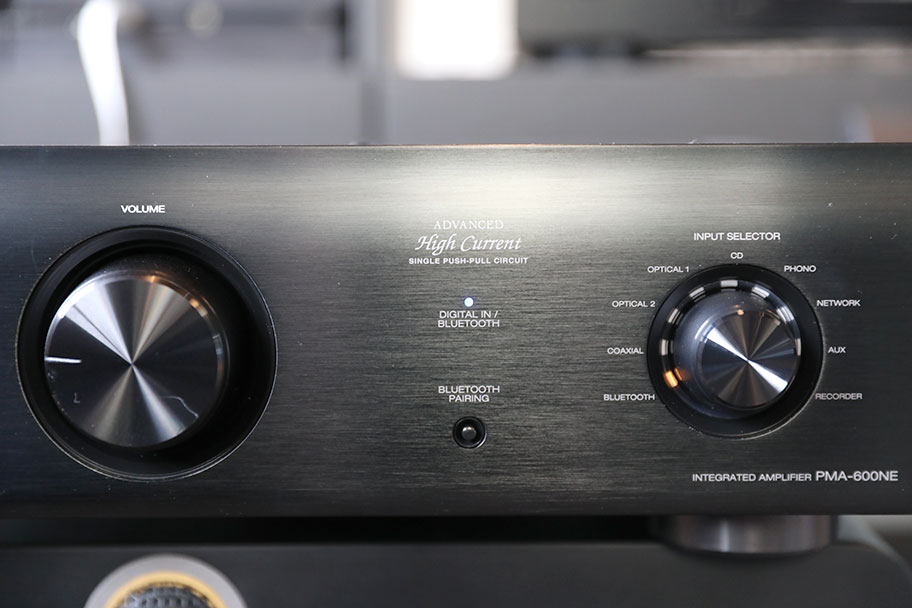
For our money, the Onkyo A-9110 is the best budget stereo amp available right now. But if you want more advanced features, there are plenty of competitors in roughly the same price range. If one of your requirements is wireless functionality, then we recommend the Sonos Amp. While it is more expensive than the Onkyo A-9110 - $899 versus $349 – it does offer Wi-Fi connectivity, as well as quite a bit more power. You get 125 watts versus 50 per channel on the A-9110. We think the A-9110 has cleaner, more defined sound, but the design and functionality of the Sonos Amp is much more 21st-century. We think it's a superb alternative.
If you’re prepared to spend a little more for additional features, then it may be worth looking at an amplifier like the Denon PMA-600NE. Denon and Onkyo are quite similar, in that they are both legacy companies which focus on function rather than form, and as you could imagine, the PMA-600NE is no looker. But it’s a terrific amplifier, with a punchy DAC and full Bluetooth functionality. We also love the sound, which is rich and detailed, with bass that packs a real punch. The downside is that it is more expensive, to the tune of about $50.
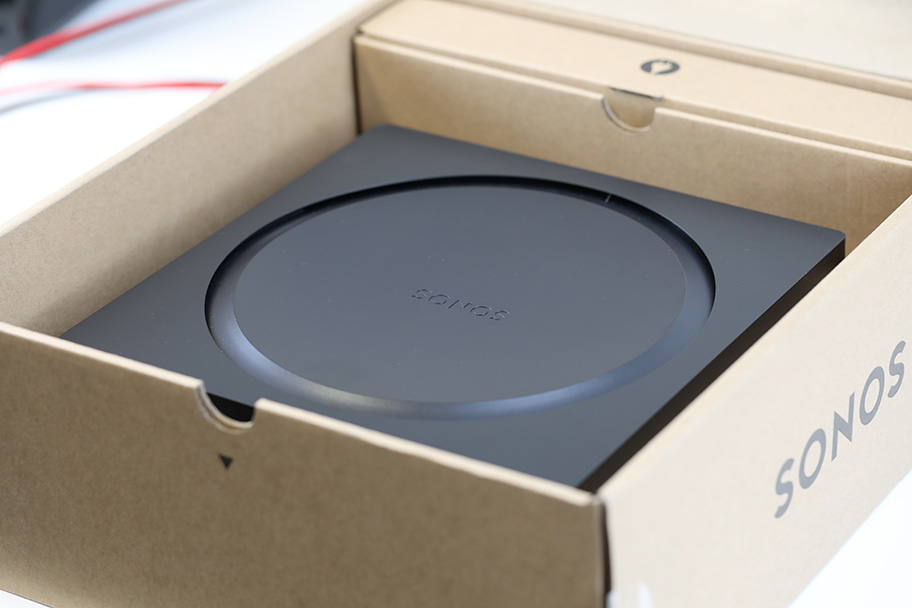
If you want an amp that's much less expensive, try the Dayton Audio DTA-2.1 BT2, which costs just under $100. You can forget about design engenuity here; this is a simple as it gets, sacrificing looks for functionality. But despite the lack of flair, you do get extensive functionality, including a subwoofer output for passive subs, Bluetooth, and tone control. The sound is more than acceptable, and it delivers just as much power as the Onkyo A-9110. There are definitely better amplifiers available, but none at this price range.
As we mentioned earlier in the review, it's entirely possible to get a combination DAC-amp from Onkyo - the A-9150. It's more or less the same as the A-9110 in terms of sound quality, but includes a couple of extra features. It also has slightly more power - 60 watts RMS at four ohms, versus 50 for the A-9110. Along with a full range of digital inputs, you also get an additional set of speaker outputs, which is great if you have more than one set of speakers. However, unless you really need these features, we think you'll be better served by buying a sub-$100 DAC, of which there are several options available. The A-9150 costs $479, so you'll be saving money and get a better DAC in the process if you mix and match.